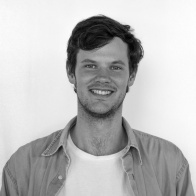它能做什麼
Pare is a prototype zero waste chair that is influenced by an extensive zero waste material exploration. The mycelium (fungi) and veneer material composite is grown and formed into complex surfaces without producing waste.
你的靈感
Although zero waste is not a new concept, zero waste design is still in its infancy in terms of discourse and practice. Even in the fashion industry, where most of the zero waste design research is currently located, the field has only been around for 10 or so years. Very little literature or precedents on zero waste design for hard materials exists. A review of precedents turned up evidence of a few timber chairs that are designed to be materially efficient, but none of them eliminate waste altogether. Project Zero has addressed this through a holistic research investigation that covered materials, fabrication, and design prototyping.
怎樣運行的
Through this research, I have undergone an extensive material exploration – developing numerous methods of manipulating materials to create structure and complex form without creating waste. Many of these documented materials and applications have the future potential to be used both within and outside the furniture context. My final prototyping focused on the development of a timber veneer and mycelium composite from which complex curves could be formed using zero waste fabrication processes. The veneer is combined with mycelium and wood waste — a sustainable alternative to polyurethane expanding foam, inspired by the Laleggara chair. The organic mycelium works like a glue, bonding together waste sawdust and wood chips to form a foam-like block. The material can be grown in 3D forms, and moulded post growth. Once cured, the material has properties similar to fibre board or strand board.
設計過程
I developed an extensive understanding towards how soft textile materials can be transformed into harder, more structural forms, or hard materials can be softened — while still maintaining biometric characteristics. These iterative processes include forming materials using heat and/or pressure as well as implementing zero waste pattern making, cutting and joining methods. I aim to limit the introduction of foreign materials when forming composites to reduce contamination towards a materials lifecycle. My extensive exploration lead me to focus on the volume of waste created within the timber furniture industry, where I am using veneer as an efficient use of material to craft complex surfaced structures. The characteristics of the veneer make the 3D panel forms appear dense, carved forms from solid timber. However, the resultant composites are surprisingly lightweight and provide some sponginess for comfort. Varying techniques of zero waste shape forming were pioneered and a strong influence from existing textile zero waste pattern making (from zero waste fashion precedents) is present. Many of the zero waste chair forms crafted from a textile incorporate a 2D to 3D shape forming process.
怎麼不一樣?
The chair prototype is an exemplar of how material innovation can be applied to concepts that strongly communicate zero waste principles in their shape, organic curved form, surface and texture. The lines of the chair are informed by a 100% zero waste pattern and shape forming process. Relief cuts communicate a zero waste pattern, where they help the veneer stretch around complex surfaces. A section cut out of the veneer’s leg pattern is used for reinforcement within the leg structure. Pares’ biomorphic form provides improved comfort, responding to the organic forms of the human figure. Without prescribing a sitting posture, Pare facilitates movement into a variety of sitting positions for prolonged sitting experiences. Pares’ biomorphic form is personified. It sits smiling with a cheeky, playful and comforting grin — emphasised by the soft radii of the relief cuts at its waist. Pare is a likable chair.
未來計劃
In ongoing research, I aim to continue refining the material to improve its performance and capability for larger volume production. The chair design will also be refined for commercial production. The design requires strength and wear testing, which is something a team of engineers would usually spend months refining for a mass-produced chair and is beyond the scope of the current research.



連結